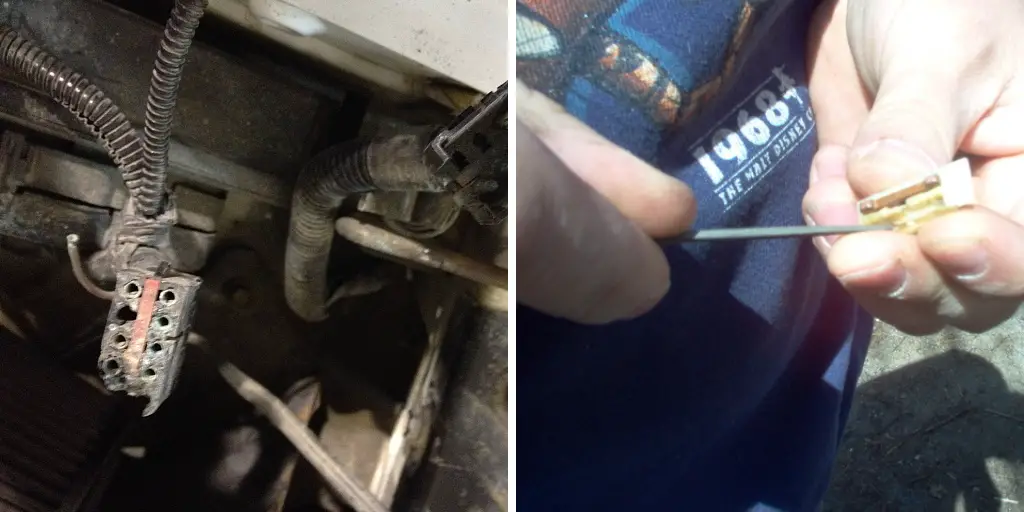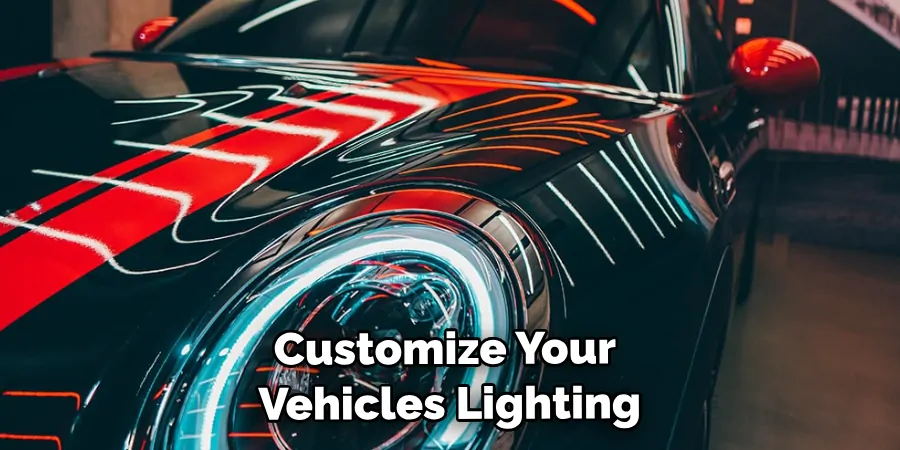There are a few reasons why you may want to bypass your headlight switch. One common reason is if your headlight switch is faulty or broken and you need to temporarily bypass it until you can get it fixed. Another reason could be if you want to install aftermarket lights that require a different wiring setup than your factory headlight switch supports.

The main advantage of bypassing headlight switch is that it can save you time and money by avoiding a trip to the mechanic. In some cases, a faulty headlight switch may make it difficult or impossible to turn on your headlights, which can be dangerous when driving at night or in low visibility conditions. Read this blog post to learn how to bypass headlight switch.
Tools You Will Need
- Electrical tape
- Wire crimper/stripper
- Wire connectors
- Electrical pliers
- Screwdriver set (Phillips and flathead)
- Socket set
- Voltage meter
- Soldering iron kit
- Fuse puller tool
By having these tools on hand, you will be prepared to bypass the headlight switch in case of an emergency.
Step-by-step Instructions for How to Bypass Headlight Switch
Step 1: Inspect the Headlight Switch
Before attempting to bypass the headlight switch, it is important to first inspect the switch and ensure that it is indeed faulty. Check for any loose connections or damaged wiring that could be causing issues with your headlights.
Step 2: Gather Necessary Tools and Materials
To successfully bypass a headlight switch, you will need a few tools and materials including wire cutters, wire strippers, electrical tape, and a multimeter. Using a wiring diagram specific to your vehicle, locate the wires connected to the headlight switch. You will typically find these wires in the steering column or dashboard.

Step 3: Identify Power and Ground Wires
Using your multimeter, identify the power and ground wires on the headlight switch. These will typically be labeled as “power” or “hot” for the power wire, and “ground” for the ground wire. Using your wire cutters, carefully cut the power wire on the headlight switch. This is usually the red or orange wire connected to the switch.
Step 4: Strip the Ends
Using your wire strippers, strip about half an inch of insulation from both ends of the cut power wire. This will expose the metal wiring inside. Take a new piece of wire and strip both ends using your wire strippers. Then, connect one end to the power wire coming from the switch, and the other end to the power wire going to your headlights.
Step 5: Connect Ground Wire
Using another piece of wire, strip both ends and connect one end to the ground wire coming from the switch, and the other end to a metal surface on your vehicle. This will serve as a grounding point for your bypass. Before securing everything in place, test your bypass by turning on your headlights and ensuring they are working properly. If not, double check all connections and try again.
Step 6: Secure and Insulate Connections
Once you have successfully tested your bypass, use electrical tape to secure and insulate all of the connections. This will help prevent any future issues with your headlights and ensure your bypass is safe and reliable.
By following these step-by-step instructions, you should now have a functional bypass for your headlight switch. Remember to always exercise caution when working with electrical components and consult a professional if you are unsure about any steps in the process.
Safety Tips for How to Bypass Headlight Switch

- Always disconnect the battery before beginning any electrical work to prevent potential shocks or damage.
- Follow a wiring diagram specific to your vehicle to ensure correct connections and avoid further issues.
- Use proper tools and safety gear, such as gloves and eye protection, when handling wires and electrical components.
- Double check all connections before testing your bypass to avoid any potential accidents.
- If you are not confident in your abilities, seek professional help to avoid causing further damage.
- Avoid touching any metal surfaces while working on electrical components, as this could result in shocks or short circuits.
- Always use high-quality materials and ensure all connections are secure and insulated to prevent future issues.
By keeping these safety tips in mind, you can successfully bypass a faulty headlight switch without any accidents or further damage to your vehicle. Remember to always prioritize safety when working with electrical components and consult a professional if needed.
What Are the Potential Risks of Bypassing a Headlight Switch?
Bypassing a headlight switch may seem like an easy solution for a broken switch or to customize your vehicle’s lighting. However, it is important to be aware of the potential risks that come with bypassing a headlight switch.

1. Overheating
One of the main functions of the headlight switch is to control the flow of electricity to your headlights. Bypassing the switch can cause an increase in the flow of electricity, which can lead to overheating and potentially cause a fire.
2. Overloading
By bypassing the headlight switch, you are altering the original wiring system of your vehicle. This can result in overloading the electrical system, causing damage to other components such as fuses or even your battery.
3. Lack of Control
By bypassing the headlight switch, you lose the ability to turn your headlights on and off as needed. This can be especially dangerous while driving at night or in low visibility conditions.
4. Legal Issues
In many countries, it is required by law for vehicles to have functioning headlights that can be controlled by a switch. Bypassing the headlight switch may result in a fine or even lead to your vehicle failing inspection.
5. Voiding Warranty
If you bypass the headlight switch on a new vehicle, it can void your manufacturer’s warranty. This means that any potential issues related to the headlights or electrical system may not be covered by the warranty.
It is important to note that these risks may vary depending on the type of vehicle and how the headlight switch is bypassed. It is always recommended to consult a professional mechanic before attempting to bypass a headlight switch.
Can Bypassing a Headlight Switch Affect the Functionality of Other Parts of the Vehicle?
When it comes to bypassing a headlight switch, there are both pros and cons to consider. While it may seem like an easy solution for faulty headlights, there are some potential drawbacks that should be taken into consideration. One of the main concerns with bypassing a headlight switch is the effect it may have on other parts of the vehicle’s electrical system. Headlights are just one small component of a larger network of electrical components in a car. By bypassing the switch, you may inadvertently affect the functionality of other parts such as the fuses or wiring.
Additionally, bypassing a headlight switch could potentially create safety hazards. Headlights serve an important purpose in ensuring visibility while driving, and tampering with the system could lead to unexpected issues on the road. On the other hand, bypassing a headlight switch can also have benefits. It could potentially save you money by avoiding expensive repairs or replacements of the switch. It could also be a temporary fix until a replacement switch is obtained.

What Are Some Common Reasons for Wanting to Bypass a Headlight Switch?
There are various reasons why one might want to bypass a headlight switch. Some of the most common reasons include:
1. Malfunctioning Headlight Switch
If your headlight switch is not working properly, it can prevent you from being able to turn on your headlights or adjust their brightness. Bypassing the switch can allow you to still use your headlights until you are able to get the switch replaced.
2. Customizing Lighting Options
Bypassing a headlight switch can also allow you to customize your vehicle’s lighting options. For example, you may want to wire your headlights so that they always stay on, even when the switch is turned off.
3. Installing Aftermarket Lights
If you are installing aftermarket lights on your vehicle, bypassing the headlight switch may be necessary in order to properly wire and control the new lights.
4. Emergency Situations
In certain emergency situations, such as a broken headlight switch during a nighttime drive, bypassing the switch can help you continue safely driving until you can make repairs.
By bypassing the headlight switch, you may also be able to save money on repairs or modifications, as well as have more control over your vehicle’s lighting system. However, it is important to note that there are potential risks and drawbacks to bypassing a headlight switch, which we will discuss further in the next section.
Conclusion
In conclusion, bypassing a headlight switch can be an intimidating task for someone who is unfamiliar with vehicle wiring. However, with the right tools and knowledge, it can be done successfully. The first step in bypassing a headlight switch is to gather all necessary materials such as wire cutters, crimpers, electrical tape, and a replacement toggle switch.
Once you have everything ready, you can begin the process by disconnecting the negative battery terminal to ensure safety. Next, locate the existing headlight switch and remove it carefully. You may need to consult your vehicle’s manual for specific instructions on how to access the switch. Once removed, take note of which wires are connected to the switch. I hope this article has been beneficial for learning how to bypass headlight switch. Make Sure the precautionary measures are followed chronologically.
You Can Check It Out to Wire Headlights to a Toggle Switch

